Amazon pufferfish - Colomesus asellus
Scientific name: Colomesus asellus
Common name: Amazon pufferfish
Family: Tetraodontidae
Usual size in fish tanks: 10 - 14 cm (3.94 - 5.51 inch)
014
Recommended pH range: 5.9 - 8
Recommended water hardness: 3 - 17°N (53.57 - 303.57ppm)
0°C 32°F30°C 86°F
Recommended temperature range: 24 - 27 °C (75.2 - 80.6°F)
The way how these fish reproduce: Spawning
Where the species comes from: South America
Temperament to its own species: aggressive/territorial
Temperament toward other fish species: peaceful
Usual place in the tank: Middle levels
Origin
The Amazon pufferfish (Colomesus asellus) originates from South America and is widely distributed throughout the Amazonian river basins in Brazil, Peru, and Ecuador. They inhabit various types of water bodies, including fast-flowing rapids, shallow streams, and areas covered with dense vegetation. In the wild, they are found in soft, acidic waters with a pH ranging from 5.9 to 8.0 and temperatures between 24-27°C (75.2-80.6°F). Their natural habitat provides plenty of hiding spots, submerged plants, and leaf litter, which they explore while searching for food.
Short Description
The Amazon pufferfish is one of the most recognizable species in the aquarium trade, thanks to its vibrant coloration and unique mannerisms. Unlike other pufferfish, they exhibit slightly less aggression, making them somewhat more suitable for a community aquarium setup, provided careful selection of tankmates. Their pale yellow-green body, broken up by distinct dark barring, adds visual interest to any tank.
Reaching an average size of 10-14 cm (3.94-5.51 inches), they possess the characteristic ability to inflate themselves when threatened by taking in water or air. However, enticing them to inflate for entertainment is strongly discouraged, as it can cause unnecessary stress and potential health issues.
Amazon pufferfish lack scales, which makes them more susceptible to aquarium-related diseases. Additionally, they have beak-like teeth that continuously grow, requiring them to gnaw on hard-shelled food to keep their beaks trimmed. If not maintained, their beaks can become overgrown, potentially affecting their ability to eat.
Lifespan
If provided with proper care and optimal water conditions, the Amazon pufferfish can live for up to 10 years or more. Their longevity heavily depends on maintaining pristine water quality and providing a balanced diet.
General Care
The Amazon pufferfish requires a spacious tank due to its active nature and relatively large size. A minimum aquarium size of 120 cm (4 feet) in length and 30 cm (1 foot) in width is recommended to house a small group of at least six specimens. Keeping them in groups is important as they can become restless and skittish when housed individually.
Since they are high waste producers, the water quality needs to be kept pristine. Using a high-quality filtration system is crucial to maintain adequate water flow and oxygenation. Perform regular water changes to prevent the buildup of waste and maintain stability in the tank's parameters. The water temperature should be maintained between 24-27°C (75.2-80.6°F), with a pH range of 5.9-8.0. The recommended water hardness is between 3-17°N (53.57-303.57 ppm).
Decor in the tank is optional but highly encouraged. Including plenty of plants, rocks, and driftwood provides hiding places and makes the environment more natural. Floating plants help to diffuse light, creating a more subdued and comfortable setting for these fish. Despite their peaceful temperament towards other species, they are best kept in a species-only setup as they can show aggression, especially when stressed.
Feeding
The Amazon pufferfish is an omnivore that thrives on a varied diet. A crucial part of their diet consists of hard-shelled crustaceans, such as snails, cockles, and crab legs, which help keep their beaks trimmed. While they will graze on algae, it is essential to provide them with a mix of meaty foods and vegetable content. Quality flakes, pellets, and foods enriched with spirulina can be offered, but they should be supplemented with live or frozen food items like bloodworms and brine shrimp.
Feed them only what they can consume within a 5-minute period, and it is often better to offer smaller meals throughout the day rather than one large meal. Overfeeding and decaying food can quickly deteriorate water quality, leading to health problems. Regular monitoring of their beak length is necessary, as it may occasionally require manual trimming if they are not consuming enough hard-shelled foods.
Sexing
There are no obvious physical differences between male and female Amazon pufferfish, making it difficult to distinguish between the sexes in a home aquarium setting.
Breeding
Breeding Amazon pufferfish in captivity is rare, and there are currently no reliable reports of successful breeding in an aquarium environment. In the wild, they are known to deposit their eggs in nests but do not provide any parental care afterward. Hobbyists who attempt breeding should be prepared for a challenging process and manage expectations accordingly.
Pictures
Bought by aqua-fish.net from jjphoto.dk
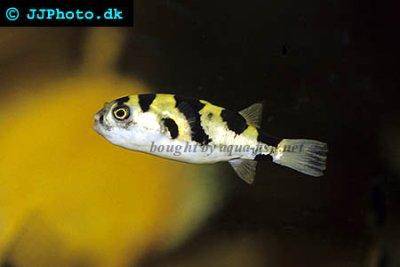




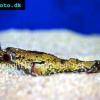 Red
Red 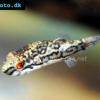 Striped
Striped 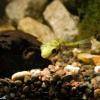 Malabar
Malabar 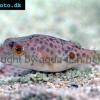 Red-spot
Red-spot 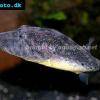 Bailey’s
Bailey’s 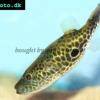 Thai
Thai 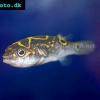 Figure
Figure 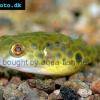 Fang’s
Fang’s 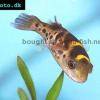 Green
Green  Coral
Coral  Giant
Giant 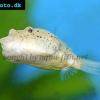 Congo
Congo 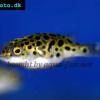 Green
Green 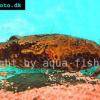 Humpback
Humpback  Mekong
Mekong 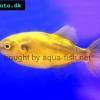 Bronze
Bronze